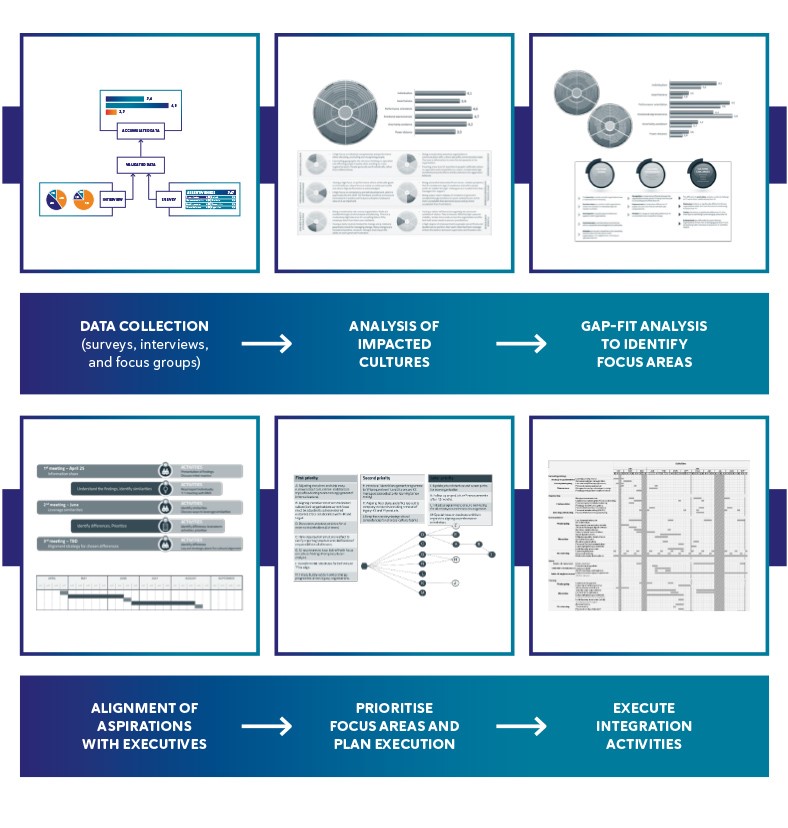Innovation is now part of our DNA – Go innovate.
22 Jun 2021
Culture can be quantified and operationalised with the purpose of managing it.
Article written by Anna Balk-Møller
22 Jun 2021
Culture can be quantified and operationalised with the purpose of managing it.
Article written by Anna Balk-Møller
The new CEO knows that culture affects an organisation’s success. She knows that changing it can be a way to improve organisational performance, efficiency, employee engagement, and many other parameters. And she has been in the organization long enough to have a sense that the culture is a restraint on the new vision and strategy for the coming years.
However, culture is often considered to be somewhat beyond our control – too difficult to measure and manage. This is not the case. Culture can be quantified and operationalised with the purpose of managing it. And we can change some of the aspects in our culture that antagonise the way forward. In this article, you will get a clear-cut guide as to how you change your organizational culture.
Do collectivistic cultures produce better team performance? Does high-performance orientation lead to a healthier bottom line? Is risk-taking prerequisite for innovation and entrepreneurship? Evidence suggests that some cultural traits better foster environments for specific elements, but we need to understand our purpose.
Evidence for a statistical correlation between performance-orientation and economic prosperity has been found. This is not surprising as organisations with high-performance orientation foster leaders who value and reward hard work, ambition, high standards, and performance improvement. However, the question is still whether those are the aspirations of e.g., the public sector, creative environments, or schoolteachers. So, we need to know our purpose.
Organisations with a high uncertainty avoidance seek to balance optimal stability with minimal risks. It has been said that without uncertainty, entrepreneurship would be unnecessary. Though there does not seem to be evidence for a strong correlation between uncertainty avoidance and entrepreneurial activity, lower levels of uncertainty avoidance do – amongst other factors – lead to higher levels of entrepreneurship. Risk control might be restraining for innovation.
But not all questions have easy answers. Whether collectivistic cultures generate better team performance than individualistic cultures depend on how teamwork is put together. People with a group mentality will utilise harmonising strategies when collaborating, whereas people with individualistic mentalities will employ consultation strategies. So again – we need to understand why we want to change something before implementing new ways of working.
We need to measure culture because we cannot rely on our ‘gut instinct’ about what culture is if we want to use it for strategic purposes. Furthermore, the data can tell us far more than what our cultural preferences are at the overall level. For example, the data reveal whether men and women, people from different business units, across age groups or seniority are aligned and which groups to prepare special tactics for when we want to embark on a cultural transformation.
The ProCulture® process for cultural transformation heavily involves the C-suite to ensure that any plans for transforming is driven by the right purpose. The 4 high-level steps are the following:

There is no bulletproof way of changing a culture. After all, it is people we are dealing with. Using a thorough and robust tool to gain insight into the current culture is a necessary first step to improve the likelihood of success. proCulture® is one example of such a tool. Once the insight has been created, there are five critical elements to get right when changing a culture:
A cultural change must always be owned by executive leadership. To be clear, executives do not dictate or shape the culture on their own, but they need to own and drive the effort to change it. Often the culture change is given to HR and with some justification. However, HR cannot change the culture by itself. They can assist and collaborate with executives to make it happen.
One of the reasons that executives must own the cultural transformation is that findings of the analysis might lead to a need for structural changes. If we for example want to be more collaborative across silos, we might need to change bonus program and the internal P&L structure. We will change nothing by just altering the company values on the reception wall – we also need to make hard decisions to have an impact.
Our story telling is both consciously and unconsciously a big part of our cultural inclination. Changing the stories, therefore, contributes to changing the culture. And to complicate further - stories are also what is not said out loud. What is implied and signalled in non-verbal language. And also, who tells the stories matter. Contradictions between old and new stories is counterproductive of what we are trying to achieve.
A sweeping cultural change approach is sometimes required, but an alternative way is to focus on a few critical behaviours, which you believe is important to get right. When a few key behaviours are emphasised heavily, employees will often develop additional ways to reinforce them. The critical behaviours should be systematically reinforced.
Without knowing the current state, it is difficult to transition successfully to the future state. It is sensible to identify specific metrics which will show whether the activities supporting the cultural change are having the desired effect on behaviours. Keep tracking - cultural transformations happens in the long haul.
If you want to read further on the topic, please find more pieces on working proactively with culture here or download our recent White Paper below.
Tell us briefly who you are and download your copy of the White Paper.
